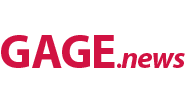- Andre Nader switched from an EPO health insurance plan to an HDHP to get access to an HSA.
- Nader found the mental burden of managing healthcare costs outweighed HSA tax benefits.
- He plans to switch back to an EPO plan in 2025 for simplicity.
Andre Nader spent years on Meta's growth team, where his work involved experimentation and testing to determine how to improve specific products.
"I like to use that same testing methodology in my own life," the 37-year-old founder of financial independence blog FAANG FIRE told Business Insider. After getting laid off in 2023, Nader didn't have to job search thanks to the seven-figure net worth he built after years of investing in index funds and transitioned to writing on Substack full-time.
In 2024, he decided to put the popular, triple tax-advantaged health savings account (HSA) to the test. One requirement of using an HSA is that you must have a High Deductible Health Plan (HDHP), so he switched his family from an EPO health insurance plan, which he'd used for most of the past decade.
Nader said the EPO plan would be the simpler choice for him and his family — he wouldn't have to think about deductibles, the co-pays would be low, and all major hospitals were in-network — but he couldn't help but wonder if the savings from having an HSA would outweigh the extra hassle of having an HDHP, which offers a lower premium but comes with a higher deductible.
The benefits of using an HSA, which he describes as a "magical account," were obvious to him. It is a unicorn in that it offers a triple tax benefit:
- You can contribute pretax dollars, which reduces your taxable income.
- You can invest your HSA funds (the investment options vary by provider), and your contributions and earnings grow tax-free.
- You can withdraw your money tax-free to cover qualified medical expenses (including things like copays, lab fees, and vaccines). After 65, you can use your HSA money to cover any expense without incurring a penalty, but the funds are subject to income tax.
Consider other tax-advantaged accounts. With a Roth IRA, you contribute after-tax money (and eventually withdraw it tax-free); with a traditional 401(k), you contribute pre-tax money (and eventually pay taxes when you withdraw).
"It's very rare to have an account where you're putting money in pre-tax and then also taking it out without paying taxes on it — and the entire time it's there, it can grow tax- and penalty-free," said Nader.
To maximize HSA gains, investors will invest their funds (rather than letting their HSA money sit in a cash account) and avoid touching it so it can grow and compound over time. Not touching your HSA funds means covering your medical expenses out of pocket, which is what Nader did throughout 2024. He saved all of his receipts from health-related expenses, so he'd have the option to reimburse himself later if he needed to (there's no time limit on when you can reimburse yourself from your HSA).
"In a spreadsheet, this is very lucrative," he said of taking full advantage of an HSA. Some companies will even contribute a certain amount to their employees' HSAs, which is essentially free money. "However, life isn't always about what happens in a spreadsheet."
Changing his coverage in 2025: 'I don't want to be living a life where I'm thinking about the cost of my healthcare'
As Nader's year of experimentation comes to a close, he's confident that an HDHP is not the right fit for his family and is switching healthcare plans in 2025. He says he'll likely go back to using an EPO.
"Even though the HSA is an amazing account that I can grow tax- and penalty-free forever, for me, the incremental benefit wasn't there," he said.
Nader and his family reside in San Francisco.
Courtesy of Andre Nader
His main issue with using an HDHP and HSA was the mental bandwidth it required.
"The reason you're saving so much is you need to actually be thinking about your medical expenses more," said Nader. "Every single time that you go to urgent care, you're paying out of pocket until you hit a deductible or your out-of-pocket maximum. Every single time you go to a specialist, you're paying out-of-pocket until you hit your out-of-pocket maximum. So there was a lot more mental overhead in thinking about my healthcare decisions."
He felt like he couldn't be on autopilot like he was with an EPO plan, where an urgent care visit may cost him $10. With an HDHP, that same visit may cost hundreds of dollars, enough to stop and think about whether to get care.
"What's been happening over this year is, every single time I've needed to go to urgent care, I've thought about it a little bit, and I really didn't like that my health decisions were intersecting with my financial decisions," he said. "I didn't want to think about whether I should go to the emergency room if I had a cut; I should just go to the emergency room and not factor in the expenses."
At the end of the day, "I don't want to be living a life where I'm thinking about the cost of my healthcare."


